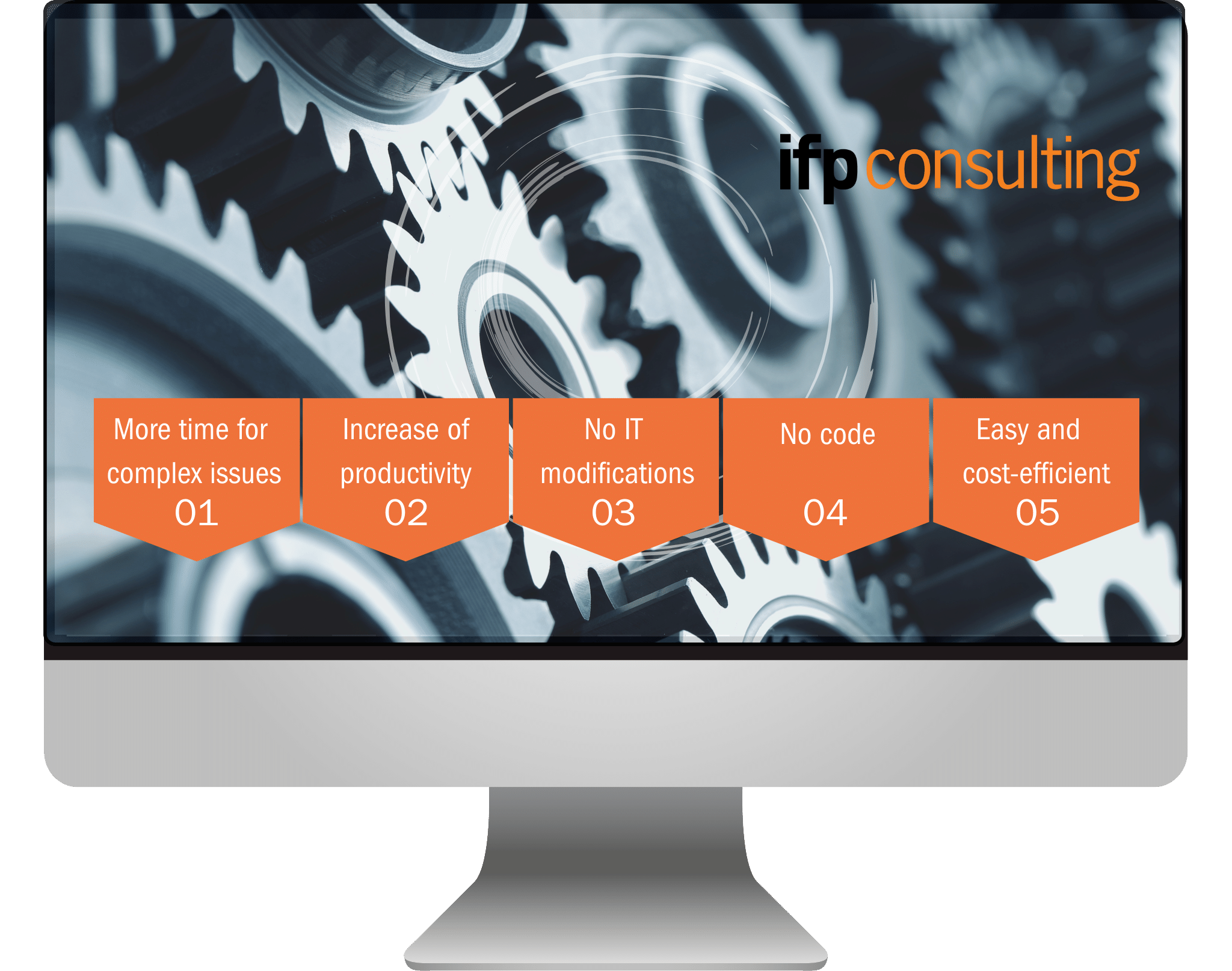Robotic Process Automation
Automate repetitive processes with simple if-then decisions.
Services in the area of digitalization
Services in the area of digitization
Prozess Automation
Potential savings through software robots
Robotic Process Automation (RPA) supports the tactical and strategic goals of your company, because there is considerable and mostly unused savings potential in process automation through software robots.
With RPA, however, the robot does not physically exist, but is only installed as software on a server or desktop. Comparable to a virtual employee who supports and relieves your workforce. In doing so, RPA assists with simple or time-consuming tasks (e.g. opening emails, copying and pasting records, reading records from the web, filling out forms).
At the same time, RPA is so flexible that a robot can be programmed for almost any such task of this type. RPA thus creates space and time for processing complex issues, reduces careless errors, and thus achieves resource savings as well as an increase in productivity.

No programming knowledge required
RPA runs on the front-end, or user interface, and unlike traditional IT, does not run on the back-end. No modification of the existing infrastructure is necessary. This results in the advantage of a fast and cost-effective implementation as well as a relief of the IT department.
RPA is a lightweight IT or low-code solution.
This means that in-depth programming knowledge is not required to operate RPA, and any non-technical user can be trained to automate with RPA programs.
This progress in technology reduces employees’ fear of contact and in turn relieves the IT department.
Easy implementation of the RPA
Due to its relatively easy implementation, RPA offers an opportunity to automate a large number of processes that previously did not justify a separate IT project. This allows you to uncover potential savings.
What are the reasons to get involved with Robotics Process Automation?
The topic of RPA has become increasingly important in the production industry and logistics in recent years. For example, in master data management, in operational purchasing, or generally as an interface between different tools that until now could not communicate together.
In the past few years, RPA technology has evolved considerably. On the one hand, through the combination with artificial intelligence (cognitive automation) and, on the other hand, through the increasing simplification of operability via drag-and-drop automation. This makes RPA a viable solution for automating repetitive processes right now, for companies of all sizes.
Optimal introduction of RPA
What is our understanding?
When using RPA for the first time, there is a lot to consider. From the selection of suitable processes and software providers, to the actual process recordings and automations while ensuring permanent operation.
With a suboptimal implementation, only a few of the above-mentioned potentials can be realized in the long term, which is why foresighted planning and experience with RPA is an important prerequisite for us.

We support you in the introduction of RPA
- RPA potential analysis
Joint and transparent potential analysis (e.g. by means of process mining) - Definition of an RPA strategy
Objective setting and definition of the strategy based on your digitalization strategy - Process selection
Feasibility analysis, qualitative and quantitative evaluations, business case - Artifacts development
Our employees are trained in the most common RPA tools - Change Management
Inspire employees and ensure a successful deployment of RPA - Documentation and training
For a smooth handover of the process to the specialist department
Factors of success
The content points must be accompanied by other factors. This includes a team with the right competencies and skills, as well as the use of the right methods and tools. Here, classic spreadsheet programs can no longer properly depict the often extremely complex relationships. Our special software is therefore used.
What are the biggest potential errors with RPA?
From the very first moment, it is important for the designer to take into account the holistic aspect of his task. This is because all relevant aspects must be considered and the causal relationships must be taken into account.
Robotic Process Automation
Take away
With a proven guide, RPA to automate processes is one way to increase efficiency.
The sustainable transfer of knowledge from ifp consulting creates the basis for independent operation and further development of RPA in your company.


